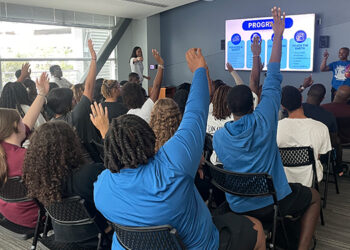Safety should be the first priority of any campus rec department, especially concerning situations that can be prevented. Among the scenarios to be considered are problems with equipment or structural design. However, the crises that are the most concerning are the unpredictable ones, such as a severe weather emergency. What makes severe weather so dangerous is the sheer magnitude of a storm’s destructive capabilities and how quickly the damage from severe weather can escalate.
Campus Rec spoke with Chris Marks, the associate director of campus recreation at the University of South Florida (USF), about the importance of severe weather emergency protocols and how to implement these programs:
CR: What protocols do you have in place for severe weather emergencies?
CM: In Florida, specifically the Tampa Bay region, the No. 1 weather concern is lightning. Late spring, summer and early fall, the threat of severe weather is daily. USF Campus Recreation utilizes the Weatherbug app on iPads the student staff already use for participant registration, check-in and incident reports. The app notifies staff when lighting is within 20 miles, and the staff will clear the field complex when lightning is within 10 miles. Participants are notified through social media and other software’s communication features to alert them to the change in schedule or cancellation.
CR: Are there any challenges in implementing safety protocols?
CM: With multiple outdoor complexes in different areas on campus and off, each one has different nearby structures to shelter participants. Depending on the size of the event or program, participants may be able to shelter within restrooms and storage buildings, but usually participants must go to personal vehicles or find a safe building close by. Staff need to be familiar with each facility to ensure participant safety.
CR: How do you educate your staff on these procedures?
CM: These procedures are covered during staff training and reviewed in meetings throughout the year. The intramural sports staff review procedures prior to the start of an outdoor sport. Staff trainings include practice evacuations for the various outdoor facilities.
CR: How do you educate students on these procedures?
CM: Student participants are given warnings when severe weather is anticipated and clear directions when it is time to move toward shelter. As with everything, staff training is crucial to mitigating risk.










